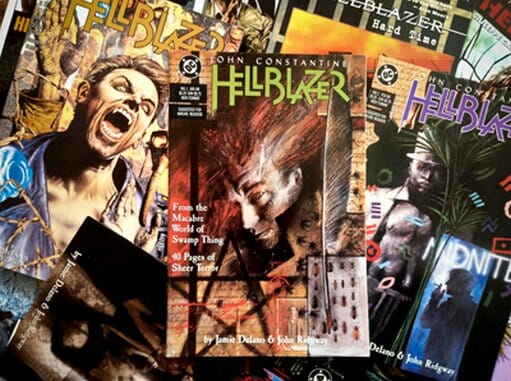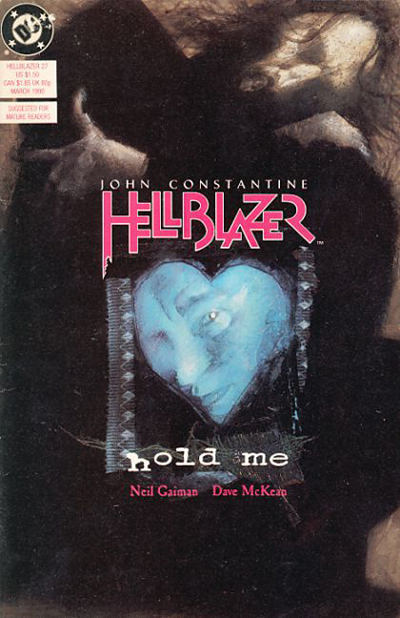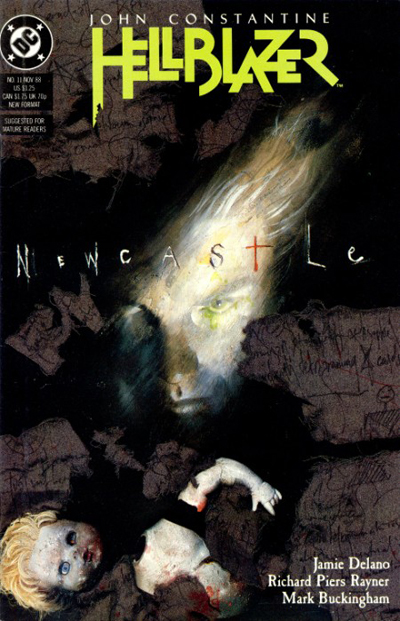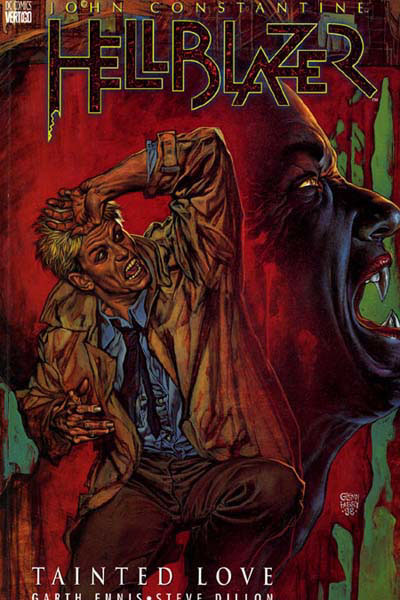The Top Ten John Constantine: Hellblazer Stories

This Wednesday, DC will usher its magic bastard extraordinaire John Constantine to a brand new title and number one issue, relaunching a character who supported 300 issues of history and talent in the seminal Hellblazer comic. First introduced in Alan Moore’s Swamp Thing after artists Steve Bissette and John Totleben requested to draw a character who resembled Police frontman Sting, Constantine is known more for making terrible decisions and pissing off malicious deities than plucking bass strings. And even though a boozing, womanizing conman might not sound revolutionary in passing, Hellblazer elevated the fledgling mature readers market of the 80s to new heights, enabling DC’s Vertigo imprint to publish some of the most important stories in the medium from some of the most provocative writers in England and beyond.
More importantly, Constantine gave us a new breed of humanist antihero.
Garth Ennis explained it best in the introduction to his “Dangerous Habits” storyline, calling Hellblazer “a comic without some loathsome morality at its core, but instead with a character who broke his own rules as he staggered through life, and could only face the consequences of his actions with the same frail, human defenses that are available to you or me.” Indeed, the character made us, the anonymous un-super reader, feel empowered as we surrounded ourselves with tales of invulnerable aliens, robots, and gods. If there’s a not-so-subtle subtext to Constantine’s misadventures, it’s that authority — be it social, supernatural, or Margaret Thatcher — is something to be abhorred and rejected upon contact. Like a plague. As an aging street sorcerer, Constantine found himself at odds with both heaven and hell, manipulating both sides to escape the increasingly dire situations that he created. Populist pulp at its finest, reading Hellblazer was like wearing a broken-in thrift store coat. It just fit without pretension, even if it did smell faintly of cheap tobacco and well liquor. There’s innate comfort in a character whose problems far exceed our own, and he transcends them with a middle finger pointed toward the unstoppable forces who make the rules he routinely breaks.
The new Constantine series probably won’t sink to the gutsy depths of its predecessor; this title takes place in a DCU proper occupied by all-age readers and spandex superheroes. Luckily, DC is reprinting every Hellblazer issue in consecutive trades (Volume 5, Dangerous Habits, releases in May) and the series has aged incredibly well. Paste decided to comb over the comic’s 25-year history to share our favorite arcs. Note that we’re only ranking the best Hellblazer stories, so while we loved his cameos in Planetary, Swamp Thing, and Sandman, we’re solely celebrating the title he called home. So pour yourself a glass of gin on ice, fire up a Silk Cut (actually, don’t), and put on your favorite Mucous Membrane track. Tell us your personal favorites in the comments.
-

-

-

-

-

-

-

-

-

-

-

-

-

-

-

-

-

-

-

-

-

-

-

-

-

-

-

-

-

-

-

-

-

-

-

-

-

-

-

-













































